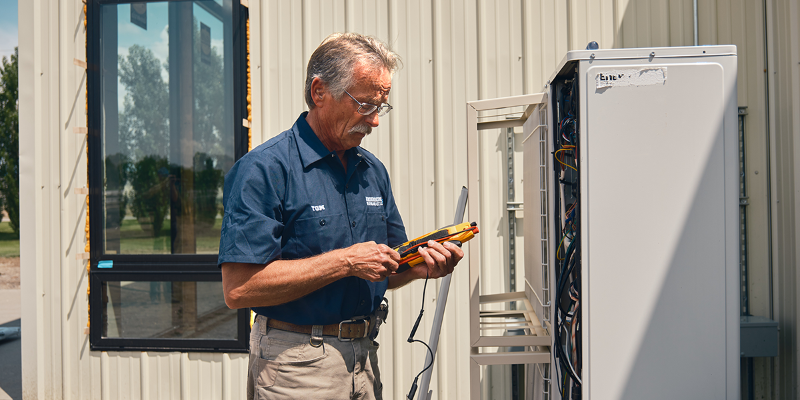Examining the Business Case for Beneficial Electrification

Beneficial electrification at Tri-State Generation and Transmission Association, which serves members across Colorado, Nebraska, New Mexico and Wyoming, is being run as a trust program first, and a technology program second. Tri-State Senior Electrification Manager Peter Rusin is explicit about the order of operations: build credibility with distribution systems and member-consumers, then scale heat pumps, insulation and flexible load.
“Our financing is just one piece,” Rusin said. “The real value is a network of trained contractors and local utility relationships that members already trust.”
As a generation and transmission cooperative serving 40 member distribution systems, Tri-State leveraged its scale to secure funding, develop the structure and deliver the back-office services that make the program work efficiently for its members.
Tri-State’s on-bill repayment offering has supported nearly $1.5 million in projects to date, coupling high-efficiency heat pumps with envelope upgrades. Qualified trade allies gain additional building-science and financial training, and members can access up to $4,500 for insulation through authorized contractors.
“Guardrails matter,” Rusin noted. “We want quality outcomes that lower power bills and improve comfort.”
The strategy is fundamentally about risk management and system value. Dual-fuel heat pumps are prioritized where they make economic sense, preserving member affordability and comfort on the coldest days while retaining electric load the rest of the season.
“During extreme events, flexible technologies let us shift load and keep the grid stable,” Rusin said. “That only works if the member trusts their co-op or PPD to make those calls.”
Trust is also how Tri-State is expanding its addressable market without overextending staff. Rather than relying on a single platform, Tri-State is working toward standardizing contractor-friendly audit and modeling tools and raising the bar on workforce competency.
“We are moving heat pump knowledge into the hands of the people already in the home,” Rusin said. “If they are trained and aligned with their co-op or PPD, adoption follows at far lower program cost.”
Quality of life remains the member-facing value proposition: warmer rooms, quieter equipment and lower monthly costs. Rusin frames it as a continuation of the cooperative legacy.
“We will never match the moment when power first reached the farm, but we can still transform lives by making homes more comfortable and affordable,” he said.
We will never match the moment when power first reached the farm, but we can still transform lives by making homes more comfortable and affordable.
Preparing for Tomorrow’s Challenges
Beyond individual benefits, Tri-State views electrification as a tool for strengthening the entire system.
“During extreme weather events like 2021’s Winter Storm Uri, having flexible technologies such as dual-fuel heat pumps could allow us to shift loads and keep the grid stable,” Rusin explained. “The only way it works, though, is if we have trust, trust between Tri-State, our distribution members and their member consumers.”
Looking Ahead
As electrification grows, Rusin believes cooperatives and PPDs will stay focused on both the human and technical sides of the transition.
“The numbers are staggering, but reliability and affordability depend on working together,” he concluded. “If we maintain that trust, we will not only deliver affordable, cleaner energy but also ensure our communities are more resilient when the next big storm comes.”
